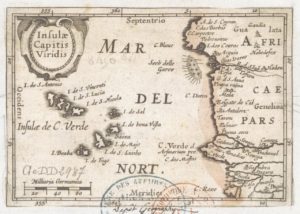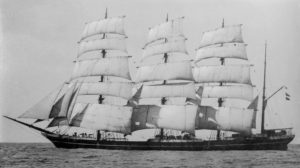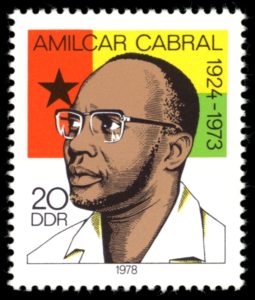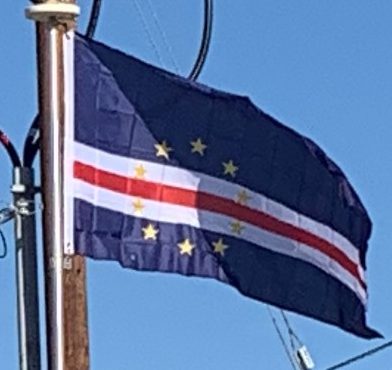In 1462, Portuguese settlers arrived at Santiago and founded a settlement they called Ribeira Grande (now called Cidade Velha (“Old City”), to avoid being confused with the town of Ribeira Grande on the Santo Antão island). Ribeira Grande was the first permanent European settlement in the tropics.

In the 16th century, the archipelago prospered from the Atlantic slave trade. Pirates occasionally attacked the Portuguese settlements. Francis Drake, an English privateer, twice sacked the (then) capital Ribeira Grande in 1585 when it was a part of the Iberian Union. After a French attack in 1712, the town declined in importance relative to nearby Praia, which became the capital in 1770.
Decline in the slave trade in the 19th century resulted in an economic crisis. Cabo Verde’s early prosperity slowly vanished. However, the islands’ position astride mid-Atlantic shipping lanes made Cabo Verde an ideal location for re-supplying ships. Because of its excellent harbor, the city of Mindelo, located on the island of São Vicente, became an important commercial center during the 19th century. Diplomat Edmund Roberts visited Cabo Verde in 1832.

With few natural resources and inadequate sustainable investment from the Portuguese, the citizens grew increasingly discontented with the colonial masters, who nevertheless refused to provide the local authorities with more autonomy. In 1951, Portugal changed Cabo Verde’s status from a colony to an overseas province in an attempt to blunt growing nationalism.
In 1956, Amílcar Cabral and a group of fellow Cabo Verdeans and Guineans organised (in Portuguese Guinea) the clandestine African Party for the Independence of Guinea and Cabo Verde (PAIGC). It demanded improvement in economic, social and political conditions in Cabo Verde and Portuguese Guinea and formed the basis of the two nations’ independence movement. Moving its headquarters to Conakry, Guinea in 1960, the PAIGC began an armed rebellion against Portugal in 1961. Acts of sabotage eventually grew into a war in Portuguese Guinea that pitted 10,000 Soviet Bloc-supported PAIGC soldiers against 35,000 Portuguese and African troops.
By 1972, the PAIGC controlled much of Portuguese Guinea despite the presence of the Portuguese troops, but the organization did not attempt to disrupt Portuguese control in Cabo Verde. Portuguese Guinea declared independence in 1973 and was granted de jure independence in 1974. A budding independence movement — originally led by Amílcar Cabral, assassinated in 1973 — passed on to his half-brother Luís Cabral and culminated in independence for the archipelago in 1975.

Following the April 1974 revolution in Portugal, the PAIGC became an active political movement in Cabo Verde. In December 1974, the PAIGC and Portugal signed an agreement providing for a transitional government composed of Portuguese and Cabo Verdeans. On 30 June 1975, Cabo Verdeans elected a National Assembly which received the instruments of independence from Portugal on 5 July 1975. In the late 1970s and 1980s, most African countries prohibited South African Airways from overflights but Cabo Verde allowed them and became a center of activity for the airline’s flights to Europe and the United States.
